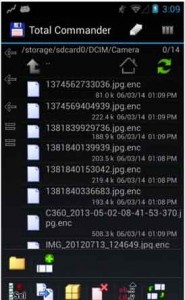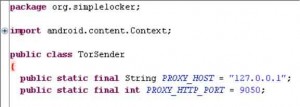ESET Analyzes First Android File-Encrypting, TOR-enabled Ransomware – Android/Simplocker
ESET, a global pioneer in proactive protection for 25-years, saw the discovery of an interesting mobile trojan – the first spotting of a file-encrypting ransomware for Android. An Android trojan, Android/Simplocker, was found on June 1, 2014 by ESET detection engineers.

Android/Simplocker setting foot on an Android device, scans the SD card for certain file types, encrypts them, and demands a ransom in order to decrypt the files. After launch, the trojan will display the following ransom message and encrypt files in a separate thread in the background.

The ransom message is written in Russian and the payment demanded in Ukrainian hryvnias, so it’s fair to assume that the threat is targeted against this region. This is not surprising, the very first Android SMS trojans (including Android/Fakeplayer) back in 2010 also originated from Russia and Ukraine. The message roughly translates to: “WARNING your phone is locked!”
The device is locked for viewing and distribution child pornography , zoophilia and other perversions.
To unlock your device, you need to pay 260 UAH by following this procedure.
- Locate the nearest payment kiosk.
- Select MoneXy
- Enter {REDACTED}.
- Make deposit of 260 Hryvnia, and then press pay and take receipt.
After payment your device will be unlocked within 24 hours. In case of no PAYMENT YOU WILL LOSE ALL DATA ON your device!”. The malware directs the victim to pay using the MoneXy service for obvious reasons, as it is not as easily traceable as using a regular credit card. 260 UAH is roughly 16 EUR or $21 US.
Android/Simplocker.A will scan the SD card for files with any of the following image, document or video extensions: jpeg, jpg, png, bmp, gif, pdf, doc, docx, txt, avi, mkv, 3gp, mp4 and encrypt them using AES(Advanced encryption Standard)

Android/Simplocker.A will also contact its Command & Control server and send identifiable information from the device (like IMEI, et cetera). Interestingly, the C&C server is hosted on a TOR .onion domain for purposes of protection and anonymity.

We can notice on the nag-screen above, there is no input field for a payment-confirming code of any kind, as ESET researchers have seen in earlier examples of Windows ransomware. Instead, the malware listens to its C&C server for a command – probably issued after payment is received – to decrypt the files.
The sample researchers have analyzed is in the form of an application called ‘Sex xionix’. It was not found on the official Google Play and they estimate that its prevalence is very low at this time. Our analysis of the Android/Simplock.A sample revealed that they are most likely dealing with a proof-of-concept or a work in progress – for example, the implementation of the encryption doesn’t come close to “the infamous Cryptolocker” on Windows.
The malware is fully capable of encrypting the user’s files, which may be lost if the encryption key is not retrieved. While the malware does contain functionality to decrypt the files, researchers strongly recommend against paying up – not only because that will only motivate other malware authors to continue these kinds of filthy operations, but also because there is no guarantee that the crook will keep their part of the deal and actually decrypt them.
Instead they encourage users to protect themselves against these threats using prevention and defensive measures. For example, a mobile security app such as ESET Mobile Security for Android will keep malware off your device. Adhering to security best practices, such as keeping away from untrustworthy apps and app sources, will reduce your risks. And if you keep current backups of all your devices then any ransomware or Filecoder trojan – be it on Android, Windows, or any operating system – is nothing more than a nuisance.






